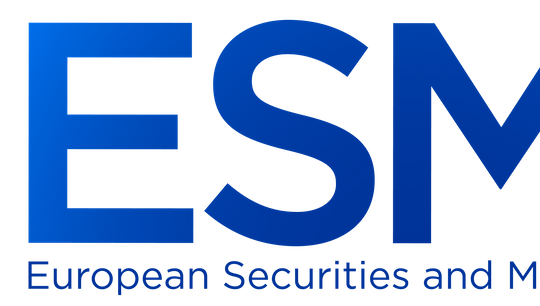Meeting the operational challenges of SFDR: The time to act is now
By Richard O’Donoghue; Ian Conlon; Niamh O’Shea; Michelle Barry, Maples
Published: 17 June 2024
We recently launched the second edition of our Sustainable Finance Disclosure Regulation (SFDR) Impact Analysis, the aim of which is to provide asset managers with a practically focused assessment on the current state of sustainable investing in Europe. The analysis, based on a review of over 26,000 funds across the two largest fund domiciles in the EU, Ireland and Luxembourg, shows a 20% growth year-on-year in the number of European sustainability funds.
Europe is at the forefront of sustainable investment globally with assets in sustainability focused funds now exceeding €5.5 trillion. We are only in the second full year of SFDR implementation and its impact on the European funds space has been immense.
In 2023, more than half of new funds were categorised as either Article 8 or 9 under SFDR and already more than 40% of European AUM sits within such funds.
Asset managers are structuring sustainable funds across all asset classes demonstrating that the Article 8 and Article 9 SFDR categorisations are not constraining managers in terms of sustainable product design. In short, SFDR is working and is achieving its key objective, namely the redeployment of capital sustainably across a broad spectrum of asset and fund types.
However, despite the significant success that SFDR has had in reorientating private capital towards sustainable investments and the growing numbers of Article 8 and 9 funds, from a legal and regulatory perspective there remains the risk for compliance gaps - particularly in ensuring an operational model that can achieve and support continued compliance.
Operational compliance under SFDR
SFDR entity level and fund level compliance sit with the asset manager of the relevant fund, (e.g., Undertakings for the Collective Investment in Transferable Securities (UCITS) management company, Alternative Investment Fund Managers (AIFM) or investment manager (ManCo)). Broadly speaking, the entity level requirements apply to the ManCo itself, how it has integrated sustainability into its operational and organisational framework, with the fund level requirements applying to the funds under its management.
Understandably, the greater attention of SFDR compliance to date has tended to focus on the fund level disclosures, (i.e. the pre-contractual templates and the periodic reports, etc). Increasingly however, the supervisory focus of European National Competent Authorities (NCAs) has been on how ManCos are complying with the operational obligations imposed by SFDR and supporting legislation as indicated through various questionnaires and thematic reviews issued by both the Central Bank of Ireland and the Commission de Surveillance du Secteur Financier.
As such, compliance with SFDR extends beyond disclosure requirements and the impact at the operational level should not be overlooked.
Policies, procedures and resources
ManCos are required to ensure that their overall policy and procedures frameworks (i) integrate sustainability risks in the management of all funds; (ii) include conflicts of interest procedures which consider conflicts that may arise as a result of the integration of sustainability risks; (iii) take into account sustainability risks (and, if relevant, take into account the principal adverse impacts of investment decisions on sustainability factors) as part of the due diligence in the selection and ongoing monitoring of investments; (iv) capture details of procedures to manage sustainability risks in the risk management policy and (v) integrate the consideration of sustainability risks into their remuneration policies.
In addition to this enhanced policy and procedural framework, SFDR also obligates ManCos to retain the necessary resources and expertise for the effective integration of sustainability risks, (i.e., dedicated members of staff). It then falls on the board / senior management of each ManCo to ensure that those people are retained and that the integration of sustainability at the operational and organisational framework occurs and is effective.
This can be challenging for ManCos to demonstrate, particularly where they have placed a significant reliance on delegate investment managers for compliance with some of these SFDR obligations. While this approach is understandable given the inherent link between SFDR requirements and the day-to-day management of a given fund, it is crucial for ManCos and their boards to design and consistently apply a SFDR compliance model which is appropriate given the nature, scale and complexity of their business as well as one which is adequately contracted and documented.
A prime example of this is meeting the SFDR website disclosure requirements, which include ManCos ensuring that the information contained on the websites is up to date, and that it is prominent and easily accessible.
When SFDR websites first went live (in advance of 1 January 2023 implementation date) these aspects may have been taken as read, but as funds are updated and change throughout their lifecycles, and the bank of SFDR periodic reporting increases, ensuring there is both the resources and oversight to meet the website requirements becomes a more onerous task. As part of our SFDR Impact Analysis, we found these requirements were not always being met. This demonstrated a basic failure to comply with the prescriptive website requirements of SFDR, but also a lack of operational oversight by the ManCos.
Areas like websites are just one of the heightened SFDR compliance risks that European NCAs are already focusing on. Therefore, having documented policy and procedural frameworks, coupled with adequate and frequent reporting, is essential in demonstrating that appropriate oversight is in place.
EMIR - a cautionary tale for SFDR
European NCAs remain in information gathering mode and are establishing baselines as to suitable and appropriate SFDR disclosure and compliance models.
It will take time before the SFDR supervisory framework takes shape. However, ManCos should not take this as an indication that compliance was addressed when they filed their pre-contractual documents in late 2022 and merely take a watching brief.
The regulatory supervisory approach to the European Market Infrastructure Regulation (EMIR) is instructive on how European NCAs are likely to approach SFDR compliance.
EMIR was introduced in 2012 (also on a phased basis) and imposed ongoing reporting obligations on ManCos with respect to the derivative trading activities of their funds under management. ManCos designed EMIR compliance frameworks largely reliant on a delegation model.
Between 2012 – 2015, European NCAs engaged in an information gathering phase to ascertain how industry was adhering to its EMIR reporting obligations. By 2016, European NCAs set out their baseline expectations to EMIR compliance and were voicing their concerns over the prevailing delegation model, warning industry that the regulatory buck stopped with the ManCo and for them not to assume their delegate was properly discharging their EMIR obligations. Unfortunately, these warning shots were not heeded (in all cases), and what followed has been a series of EU-wide regulatory enforcement actions, sanctions and fines for ManCos resulting from EMIR non-compliance.
The time to act is now
EMIR is the cautionary tale for SFDR. European NCAs no more than industry, have been challenged by the pace of SFDR’s implementation and the new concepts it introduced to the regulatory supervisory framework.
What is clear is that European NCAs are working in lockstep with regards to SFDR compliance. And once they have established their baseline expectations as to what represents appropriate SFDR disclosure and compliance models, this will be articulated to industry.
It will then be down to ManCos and their boards to implement and adhere to those expectations. Failure to do so will undoubtedly result in regulatory enforcement actions and fines for bad actors.
The average fine levied to date by European NCAs for EMIR non-compliance has been approx. €150,000. These fines were largely for lack of oversight and/or failure to meet ongoing reporting obligations. In most cases, investors were not impacted or did not suffer a loss. The same will not be the case for SFDR. Compliance failures under SFDR create the very real risk of greenwashing and direct adverse outcomes for investors so regulatory fines will in all likelihood be significantly higher.
So how can ManCos ensure they are meeting all of their SFDR obligations? Well simply put, they should be assessing their contractual arrangements, stress testing their policy and procedural frameworks to ensure there aren’t any SFDR compliance gaps and ensuring adequate and frequent reporting is in place. It’s too late to do so when an issue emerges, especially in the face of potential regulatory interventions.
Areas like websites are just one of the heightened SFDR compliance risks that European NCAs are already focusing on.
EMIR is the cautionary tale for SFDR. European NCAs no more than industry, have been challenged by the pace of SFDR’s implementation and the new concepts it introduced to the regulatory supervisory framework.








